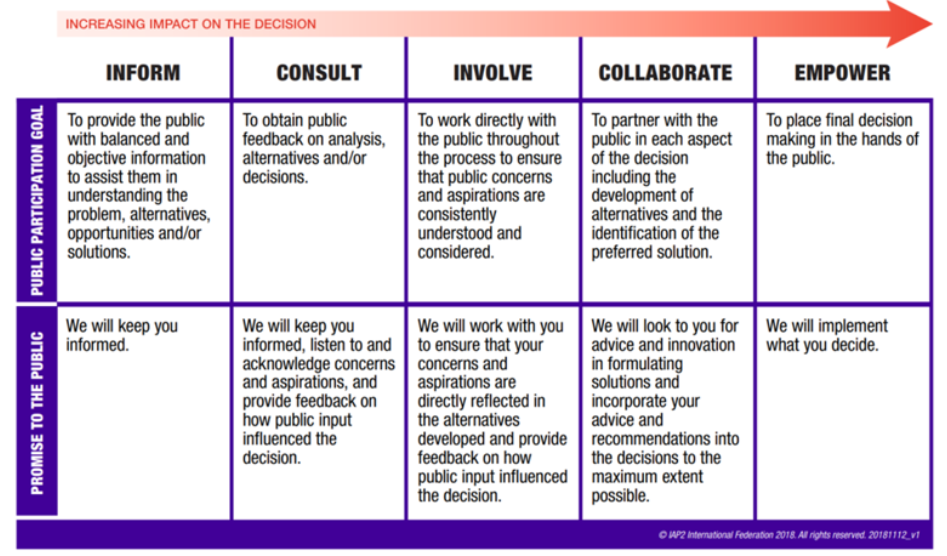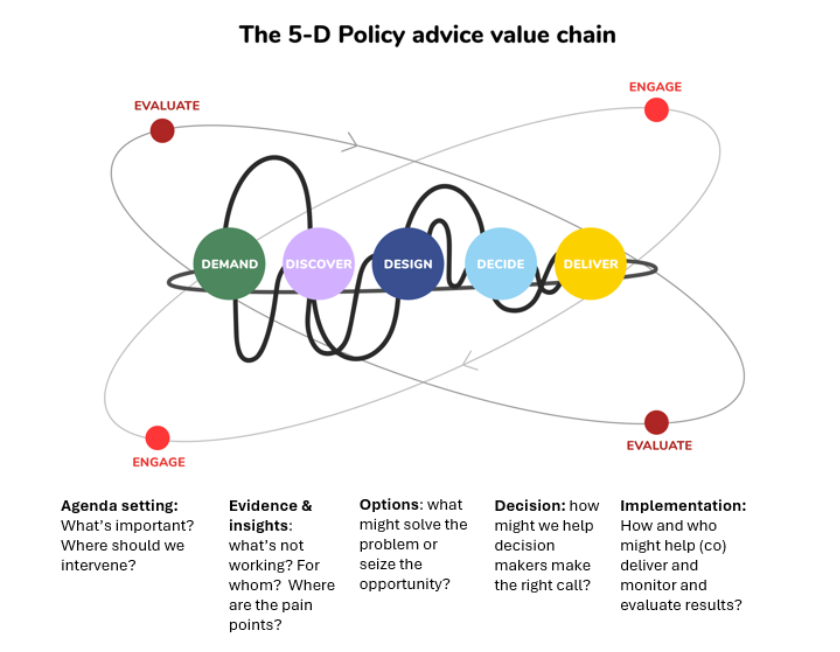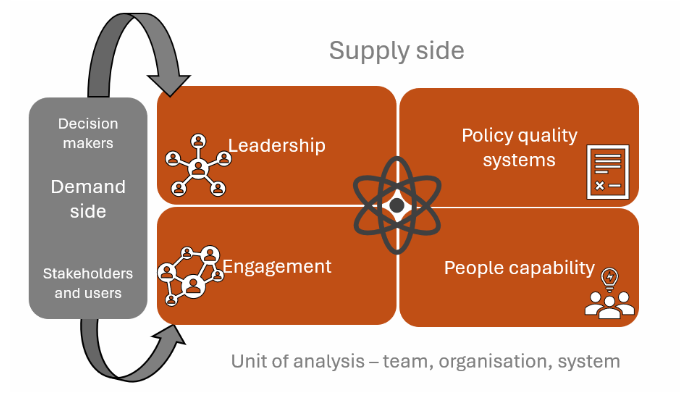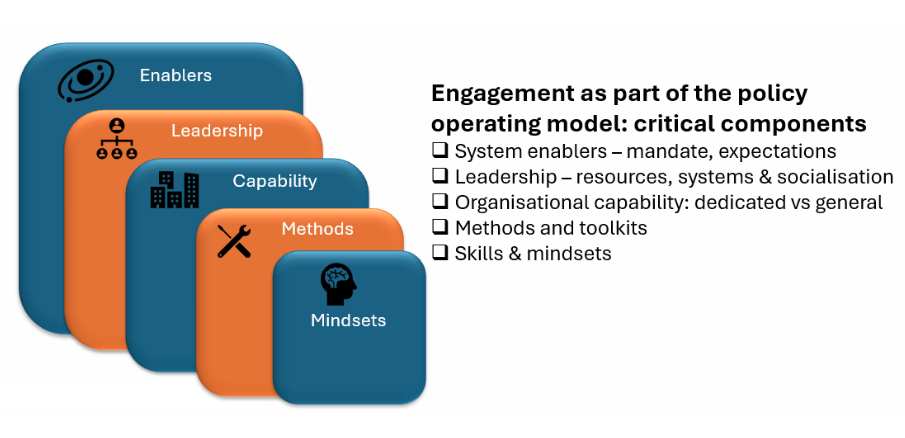Putting the Public into Public Policy: Engaging for Better Decision Making
8 July 2025
● News and media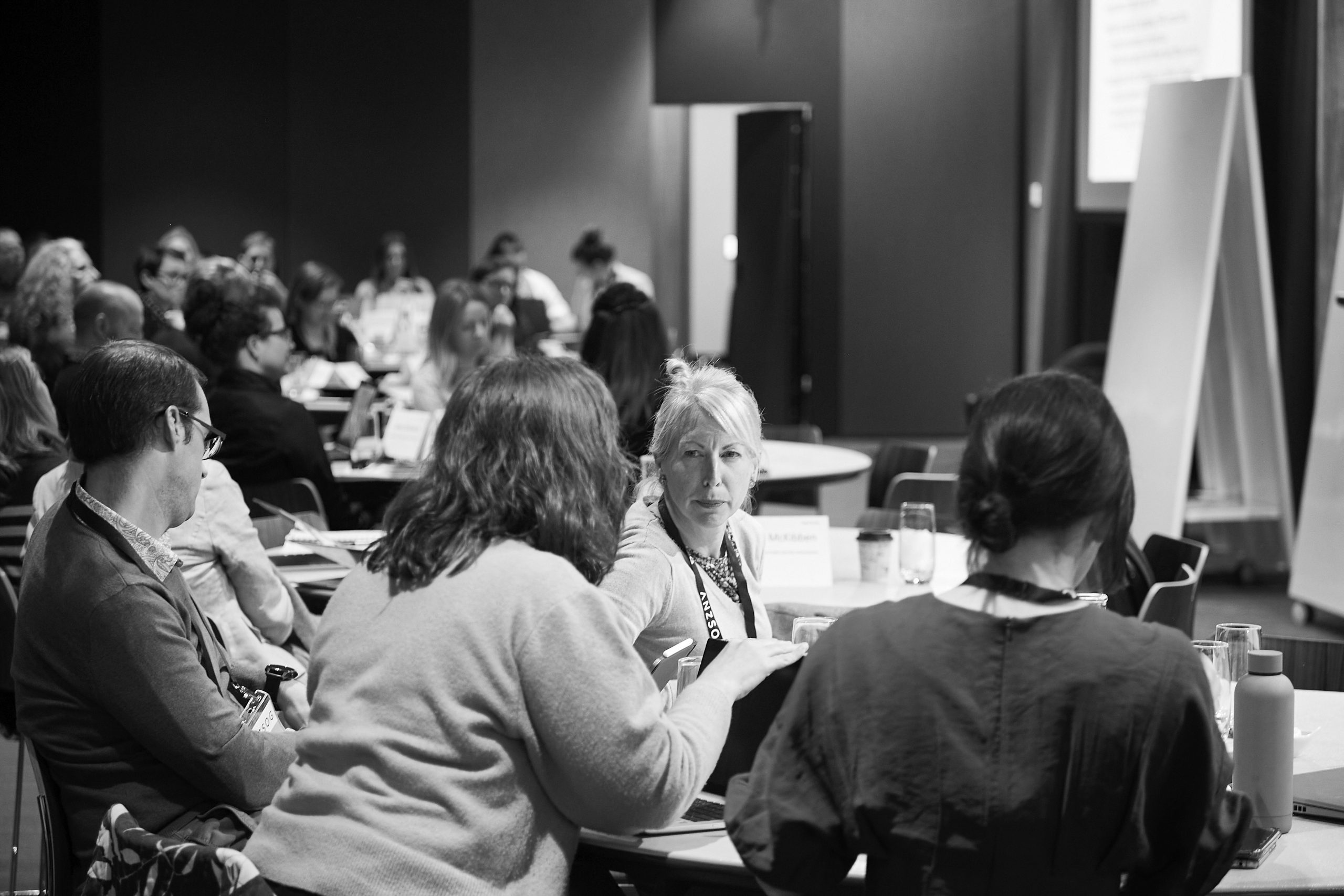
This article, (first published in The Mandarin) is based on a keynote address given by Australia and New Zealand School of Government (ANZSOG) Practice Fellow Sally Washington at the launch of the Irish Policy Handbook and wider conference on Public Engagement for Better Policy at the University of Galway. It builds on the themes of a previous article: Delivering quality policy advice? Think D, E and F words that outlines the 5D policy model.
Good policy depends on engagement with the people likely to be affected by it. That doesn’t mean a quick ‘consultation’ after policy has already been developed. Engaging the public in policy – seeking the views of stakeholders, community groups and especially populations often excluded from the policy process like indigenous people, youth, people with disabilities – can help shape policy and enhance its likely success. That has implications for ‘how we do policy’ and for public service capability.
Catching the deliberative wave
Democracy is changing. People expect to have more say in the decisions that will affect them, rather than trusting their elected representatives to decide on their behalf. Participatory or deliberative processes, the so-called ‘deliberative wave’ offer the promise of better decisions. Engagement brings diversity of thought, lived experience, and local knowledge into the policy process, reframing and enriching the evidence base and surfacing potential blind spots. It builds ‘relationship capital’ that can enhance trust, understanding, and shared ownership that underpins effective policy implementation.
Last month, at the launch of a Policy Handbook to improve the policy performance of Ireland’s civil service, the Irish Taoiseach (Prime Minister) said, “…engagement must be built into policy development from the start and be sustained throughout. This is not necessarily an easy process… there are trade-offs”. Governments need to take a deliberate approach to the deliberative wave to avoid wipeout. Policy practitioners need to know when to engage, who with, for what purpose, and how.
Engagement for what purpose?
The International Association for Public Participation’s spectrum of public participation (figure 1.) provides a useful compass for thinking about the why and when of engagement; from simply informing the public to empowering them to take final decisions (as in participatory budgeting or binding referenda).
Figure 1. IAP2 Spectrum of Public Participation
Engagement is not a one-size-fits-all. Who you engage with depends on the purpose and potential impact of the decision. What is the type, complexity, scale and scope of the policy challenge or opportunity? Does it require deep and targeted engagement with specific groups or broad-based open engagement with the population at large? How much decision-making power are you prepared to give over to the wider community? The type of challenge as well as the appetite for external input will help determine which engagement method to employ (discussed below).
When to engage?
Engagement can happen at any or all stages of the policy process. At ANZSOG we’ve built this notion into the 5D policy advice model. Engagement is part of each of the 5 Ds of the model, from understanding the challenge to delivering the final solution (figure 2). The Irish policy handbook draws on our 5D model where engagement appears as part of an underpinning ‘legitimacy’ pillar.
Figure 2. 5D policy model with engagement lines of inquiry
As I’ve argued previously, engagement is a key component of the wider policy infrastructure (figure 3). Targets for engagement include stakeholders and those affected by public policy, but also decision makers (including ministers) and other parts of the policy value chain (frontline staff, experts in procurement, legal, communication etc.).
Figure 3. The policy infrastructure
Policy is no longer a desk-based activity, if it ever was. If engagement is to be a regular part of the policy process, then we need to think about how we build it consistently into the policy operating model.
How to engage: building engagement into the policy operating model
Figure 4. Components of the policy engagement operating model
There are some critical components to build engagement into the way we do policy (figure 4.). Key considerations include:
- System enablers: Policy practitioners often claim they need ‘permission’ (from ministers/senior leaders) to engage externally. What sort of mandate and permissions are given for going to the public? Is that permission implicit in ministerial statements (such as the Irish Taeseach’s speech above) or does it need to be built into policy standards and guidelines?
- Leadership: Leaders are crucial in signaling the bounds of good policy practice. How do leaders encourage staff to engage, whether to ‘go out’ to engage or ‘invite in’ diverse voices? What resources and systems help to socialize and support the engagement imperative?
- Organisational capability: Many organisations have engagement specialists on staff, but they are often only involved at the end of the policy process when their job is limited to communicating or ‘selling’ a policy. How might they be more effectively involved in the policy process upfront and how might they be enlisted to help build the engagement skills of policy staff?
- Guidance, methods and toolkits: There is a multitude of engagement methods from the traditional to technologically enabled: focus groups, deep engagement based on design methods, Town Halls, mini publics, citizen juries, sandboxes, and citizen assemblies. Citizen assemblies are becoming more popular, often used for tackling politically sensitive issues like the Irish abortion decision, but also increasingly used for setting agenda – albeit more in the local and municipal space (like Paris’ Citizens’ Assembly). Examples from Aotearoa include deliberation on the next source of water for Auckland, and the future of transport funding. Platforms and specific software can support the engagement process – from simple survey monkey inquiries to collaborative platforms like Discourse. AI can be used to speed up the process of extracting patterns and themes from consultation exercises such as the UK government’s Consult. Digital twins are even being tested in regulatory sandboxes for deliberative processes. The key challenge is for policy practitioners to know the purpose of each method, when to use it, how to use it, and the relative costs and benefits. To this end, government organizations and jurisdictions have issued engagement guidelines – such as the Aotearoa Policy Project’s policy toolkit engagement guidance, Australia’s Guide to the right engagement, the UK Policy Lab’s people-centered policymaking, and the OECD’s guidelines for citizen participation. Engagement guidance also needs to be socialized and built into broader policy guidance, policy quality assurance processes, and policy skills and competency frameworks.
- Skills and mindsets: Engagement features in articulations of policy skills. The UK Policy Profession Standards include a rubric on ‘participation and engagement’, while the Aotearoa Policy Skills Framework includes ‘engage and sustain relationships’ as a practice to support the delivery of quality policy advice. As governments evolve from being the sole ‘do-er’ towards being a broker, facilitator, catalyst and partner with external groups for achieving policy outcomes, the ability to curate and convene conversations, and manage processes and relationships to co-create solutions will be increasingly important. The default mindset needs to continually ask “who needs to be involved?”. Even where direct engagement is problematic there are empathy tools to help practitioners ‘walk in the shoes’ of those they are designing policy for.
What could possibly go wrong – or right? Things to consider…
Engagement is not a panacea. As the Irish Taoiseach noted, it’s not easy and there are tradeoffs. Costs and benefits need to be considered. The costs include time and effort that goes into engaging external voices. But taking time up front might save time later. There are other risks, to relationships and reputation, as well as political risks if things aren’t handled well – where the wrong method is chosen (a binary choice rather than nuanced deliberation or not suited to the population group), where key voices aren’t heard, where voices aren’t furnished with adequate information, or disinformation disrupts the process. Raised and then dashed expectations can undermine trust (as we saw in the Australian Voice referendum). But the status quo, or doing nothing, also carries risks. Some risk can be mitigated by being clear about decision rights (how much is being ceded) and transparently communicating final decisions and how and why they were taken. Policy practitioners need to balance competing interests when diverse views are sought. This is the crucial sense-making role of working in policy.
The future of public policy is participatory. It is people-centred. It’s about co-creating solutions, not just consulting on problems or pre-baked solutions. A mature democratic infrastructure is one that values diverse voices, fosters trust, and delivers better and fairer outcomes. The ‘how’ of policy is evolving. The challenge is shifting how we think about power, evidence, and expertise – to put the public into public policy.
The 5D Policy model is outlined more fully in this Policy Design and Practice article by Sally and ANZSOG colleague Dr Chris Walker.
This animation has also been produced as a visual explanation of the 5D model.

